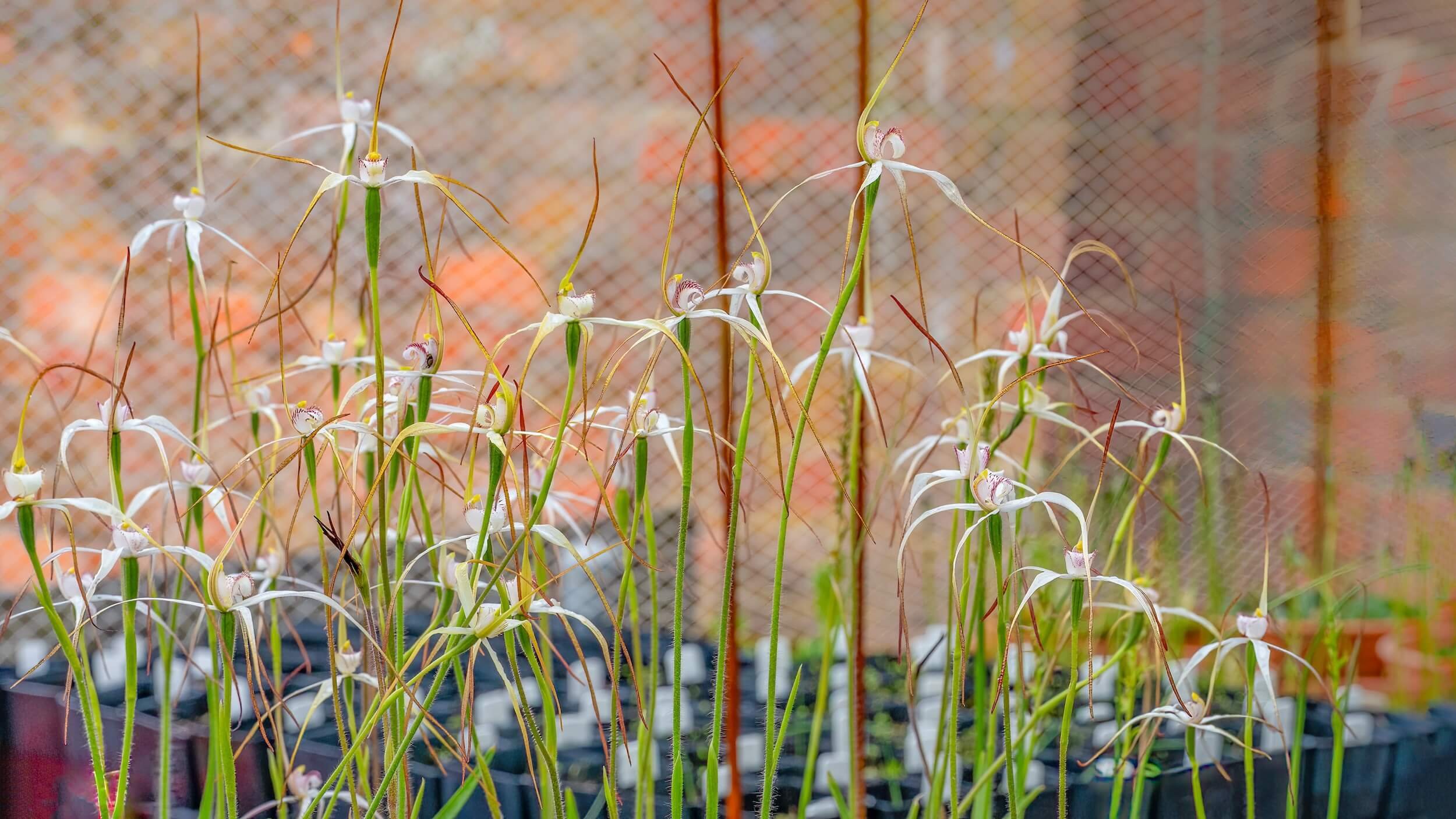
Saving Threatened Orchids
Saving Threatened Orchids
Paraprasophyllum tunbridgense – Eddie Gall
The Tasmanian Orchid Conservation and Research Program (TOCRP) aims to improve the conservation status of Tasmanian threatened orchids through the implementation of recovery actions identified in the National Tasmanian Threatened Orchid Flora Recovery Plan. The Recovery Plan identifies important conservation activities for 72 species occurring in Tasmania of which 36 are listed as threatened under the Commonwealth Environment Protection and Biodiversity Conservation Act 1999 (EPBC Act). The TOCRP is hosted at the Tasmanian Seed Conservation Centre (TSCC) at the Royal Tasmanian Botanical Gardens and is coordinated by the Landscape Recovery Foundation.
The Program is focusing on the following strategies:
1. Ensure that the Tasmanian orchid flora is represented in the Tasmanian Seed Conservation Centre’s collections
2. Educate the community about the importance of the Tasmanian orchid flora and its conservation.
3. Develop an orchid translocation program with goals to down list species most at risk of extinction.
For more details, see the Tasmanian Orchid Conservation Program Plan 2021-26.
The Program is developing a translocation program for threatened orchids in the Tasmanian Midlands. Our target species are:
• Caladenia anthracina (black-tipped spider orchid)
• Paraprasophyllum taphanyx (graveside leek orchid)
• Paraprasophyllum incorrectum (golfers leek orchid)
• Paraprasophyllum olidum (pungent leek orchid)
• Paraprasophyllum tunbridgense (tunbridge leek orchid)
• Pterostylis commutata (midlands greenhood)
• Pterostylis wapstrarum (fleshy greenhood)
In 2022-23 we targeted collections efforts, extension surveys and translocation site assessments on these species, submitting the first seed collections of the midlands and fleshy greenhoods to the TSCC. The results of extension surveys located new sub-populations of the golfers leek orchid and the midlands greenhood along with sub-population extensions for the black-tipped spider orchid and the pungent leek orchid. We also identified potential translocations sites for all seven target species. This work was funded by the Australian Government’s Environmental Restoration Fund and the Australian Orchid Foundation, with in-kind contributions from the LRF, Bush Heritage, Threatened Plants Tasmania and TOCRP volunteers.
The Orchid Conservation Program has been built on considerable voluntary contributions. Here is a story from one of our volunteers and botanical artist, Deborah Wace. The Program is currently supported by funding from the Australian Orchid Foundation, the Australian Seed Bank Partnership and Sarlco.
Collecting seed from Paraprasophyllum crebriflorum
Ben Cameron
Caladenia caudata
Malcolm Wells
Paraprasophyllum incorrectum
Keith Marin-Smith
Caladenia anthracina
Graham Green



